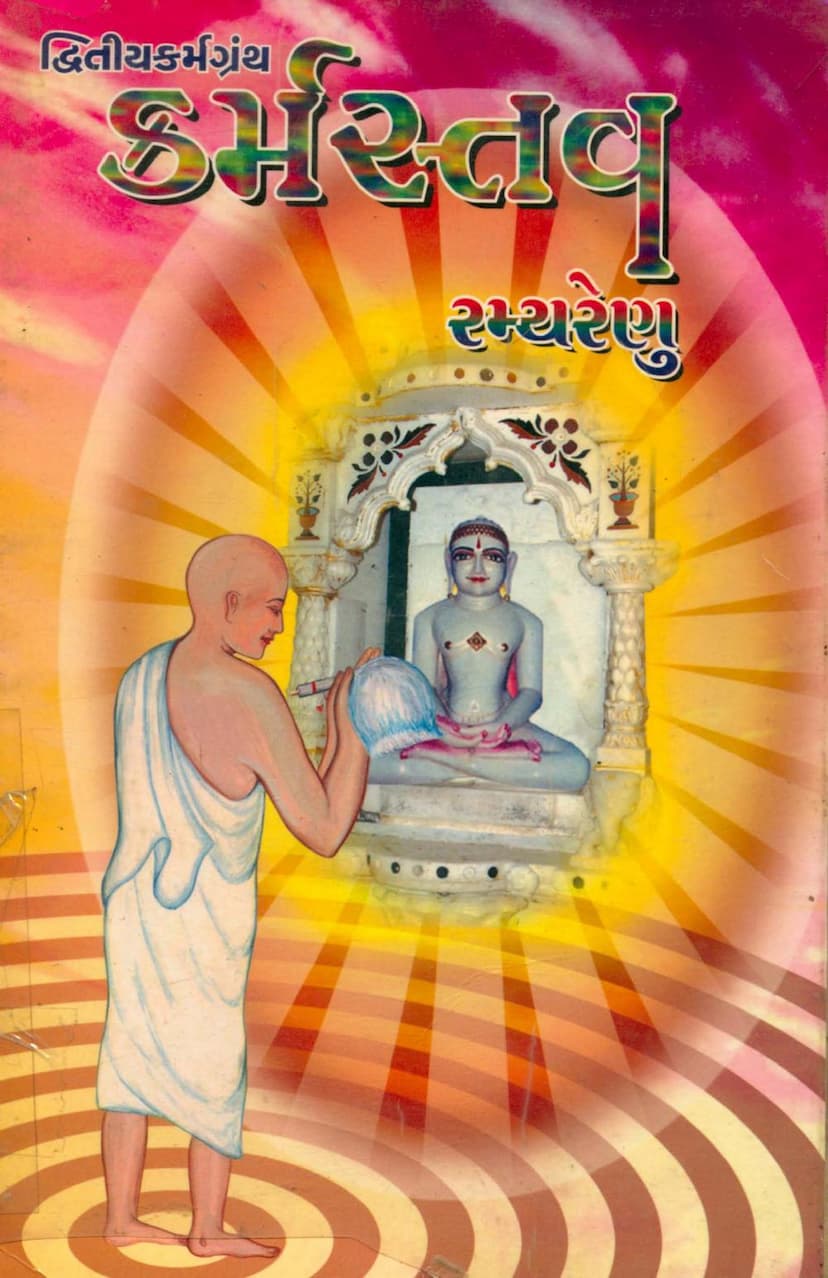Karmstav Dwitiya Karmgranth
Added to library: September 2, 2025

Summary
This document is a summary of the Jain text "Karmstav Dwitiya Karmgranth" by Ramyarenu. The text extensively details the principles of Jain karma theory, explaining the bondage, origination, mutation, and cessation of karma. It systematically describes the 14 spiritual stages (Gunashthanas) and the corresponding karmic activities at each stage.
Here's a breakdown of the key concepts covered:
1. Karma Theory:
- Bondage (Bandha): The process of karma getting attached to the soul is explained. The text details the different types of karma (Prakriti Bandha, Sthiti Bandha, Rasa Bandha, Pradesha Bandha) and the specific durations (Sthiti Bandha) for different beings and karma types.
- Origination (Uday): How karma fructifies and causes experiences of happiness and suffering. The text explains the different types of origination (Vipakoday and Pradesha Uday) and the concept of conflicting karmas not arising simultaneously.
- Mutation (Udiraṇa): The process of bringing forward the fructification of karma earlier than its scheduled time.
- Cessation (Satta): The state of karma remaining in the soul's possession without manifesting.
2. Spiritual Stages (Gunashthanas): The text meticulously describes the 14 Gunashthanas, which represent the soul's journey towards liberation. It details the specific types of karma that are bound, in origination, mutated, or in cessation at each stage. The text emphasizes how the soul progresses through these stages by purifying itself of karmic particles, primarily through right faith (Samyaktva), right knowledge (Samyak Gyan), and right conduct (Samyak Charitra).
3. Specific Karmas and their Processes: The text delves into the specifics of various karmas, including:
- Mithyātva Mohaniya Karma: Its position in the Bandha, Uday, Udiraṇa, and Satta is explained in detail, including its duration (Sthiti Bandha) and its impact on the soul.
- Ayushya Karma (Life-span Karma): The process of binding different types of life-span karma and how it relates to the soul's state.
- Gati Karma (Destination Karma): How karma determines rebirth in different realms (hell, animal, human, celestial).
- Nāma Karma (Body-determining Karma): Explaining how karma creates the physical form and its attributes.
- Gotra Karma: How karma influences one's social standing and lineage.
- Vedaniya Karma: The karmas responsible for experiencing pleasure and pain.
- Mohaniya Karma: The karmas responsible for delusion, attachment, and aversion.
- Jñānāvaraṇīya and Darshanāvaraṇīya Karma: Karmas that obscure knowledge and perception.
- Antarāya Karma: Karmas that obstruct the fruition of positive qualities.
4. Key Concepts Illustrated: The text employs detailed explanations and diagrams (though not fully rendered in the provided text) to illustrate complex concepts like:
- Nishkekrachana: The arrangement of karmic particles into a structure that determines their eventual manifestation.
- Abadhakāḷa (Inaction Period): The period during which a karma does not cause suffering.
- Nishkekrāla (Fructification Period): The period during which karma causes its effects.
- Udayāvalī: The sequence of origination of karmas.
5. Metaphorical Explanations: The text uses analogies and metaphors, such as the "ladder to Moksha" for the Gunashthanas and the "potter's wheel" for the cyclical nature of karma, to make the concepts understandable.
6. Authorship and Dedication: The book is authored by Ramyarenu and is dedicated to esteemed spiritual figures, including Acharya Shri Devendrasurishwar Maharaj, and supported by various Jain Sangh organizations. The author expresses deep respect for her gurus and benefactors.
7. Structure and Content: The text appears to be a comprehensive commentary on the "Karmstav" (likely a foundational text on karma), elaborating on each aspect with detailed explanations. The "Prashnottari" (Question and Answer) section at the end further clarifies complex points and common doubts related to Jain philosophy and karma.
In essence, "Karmstav Dwitiya Karmgranth" is a profound exploration of the intricate workings of karma in Jainism, guiding the reader through the spiritual path towards liberation by understanding the nature of karma and the means to overcome it.